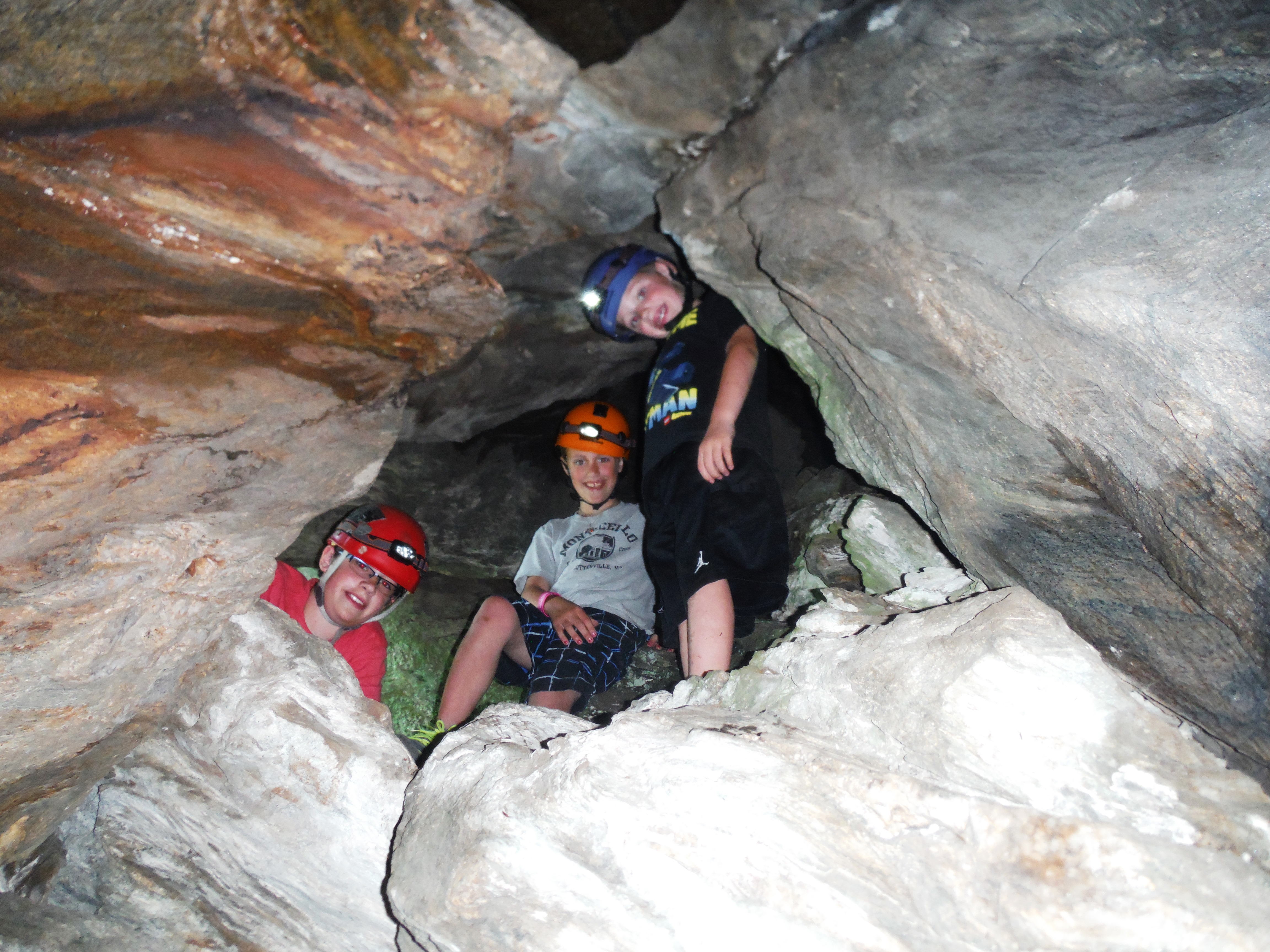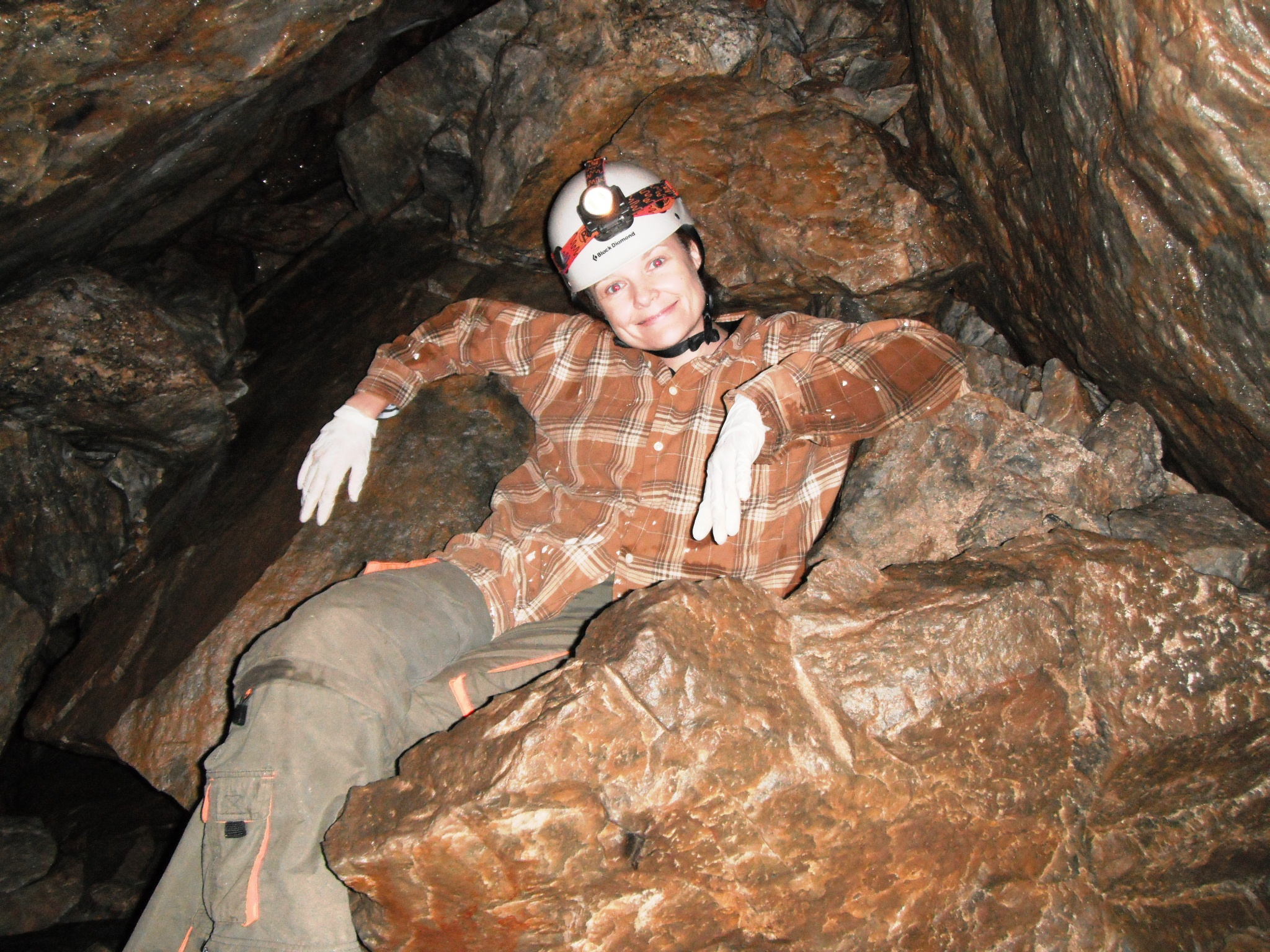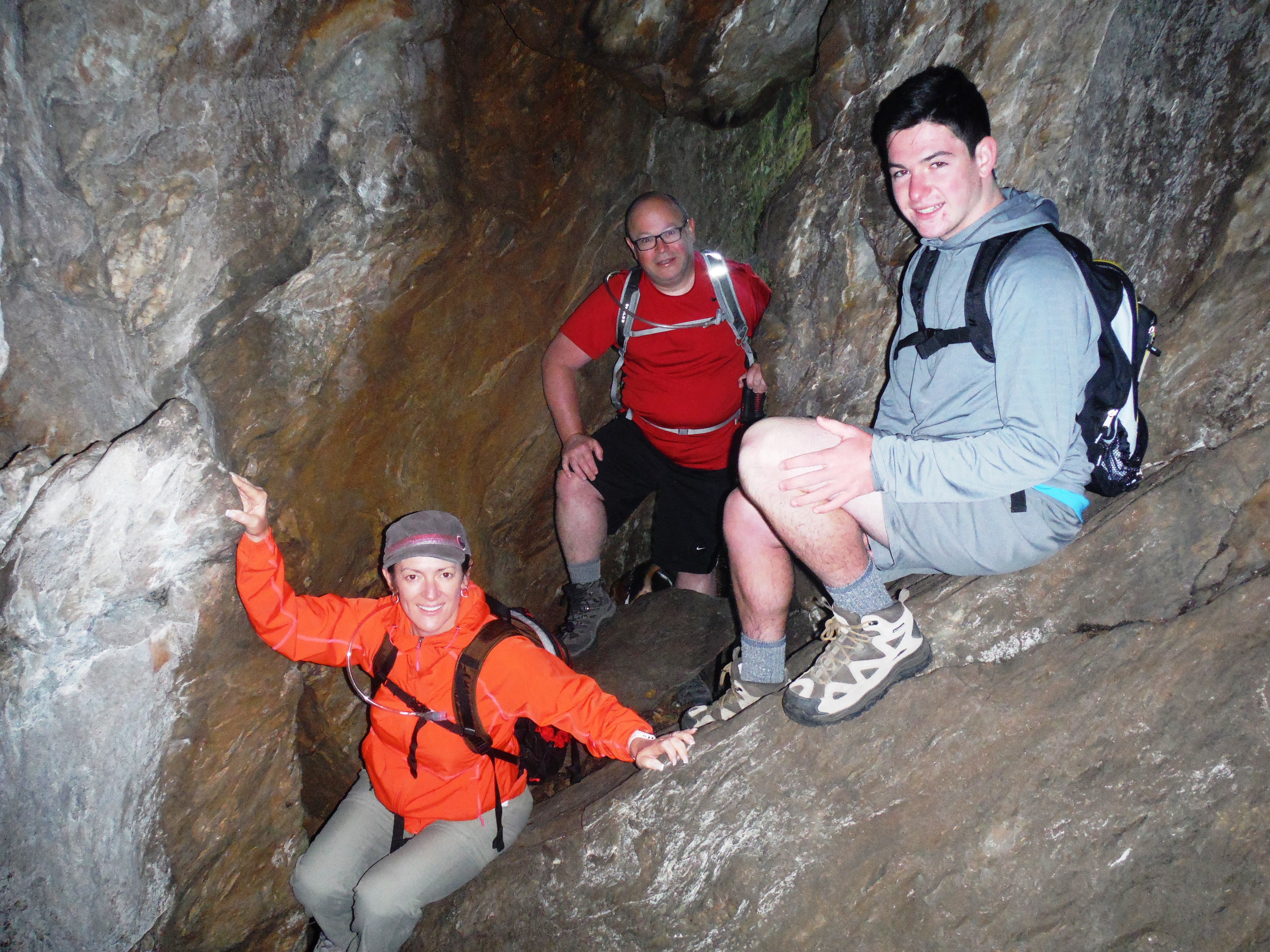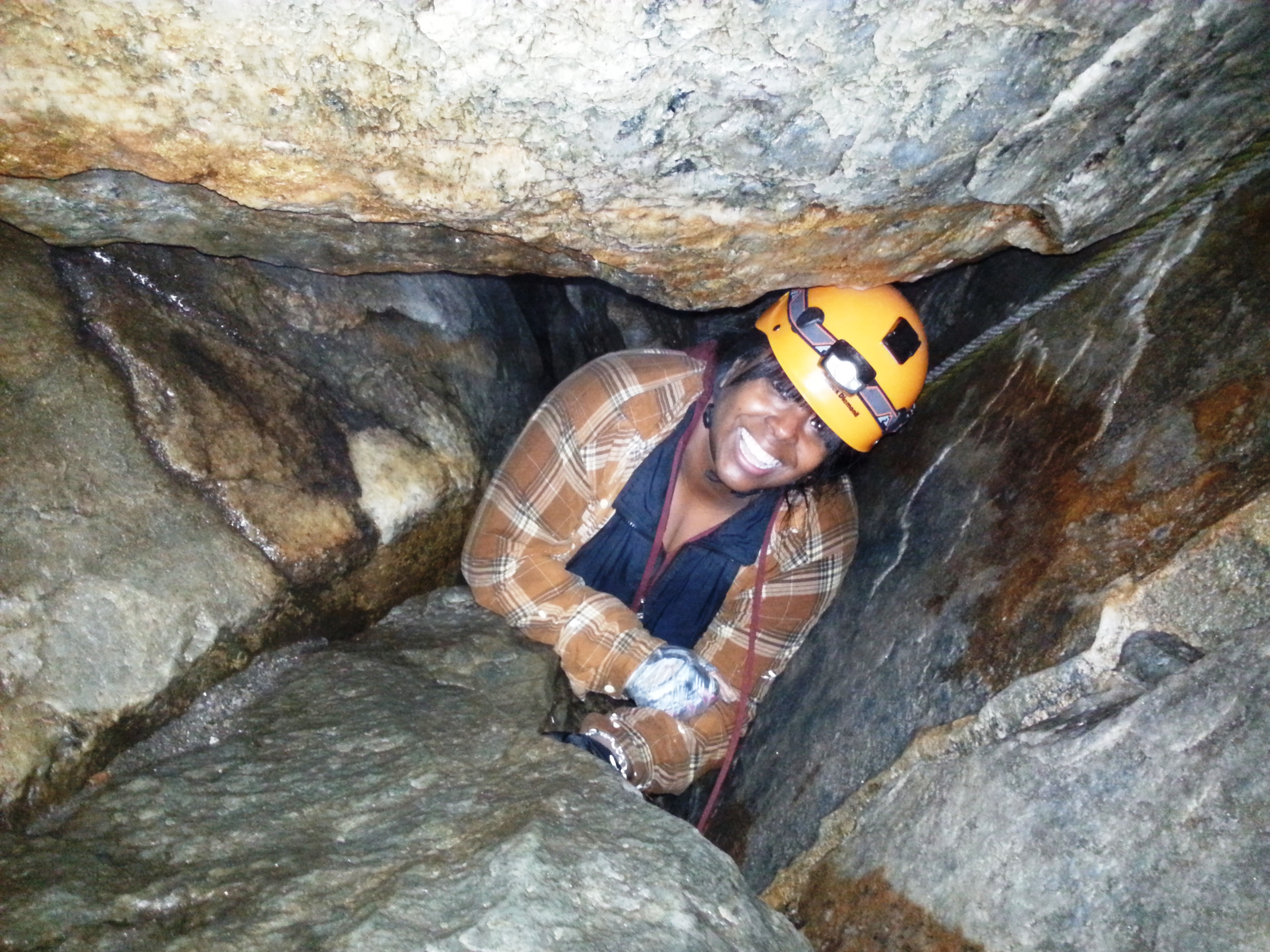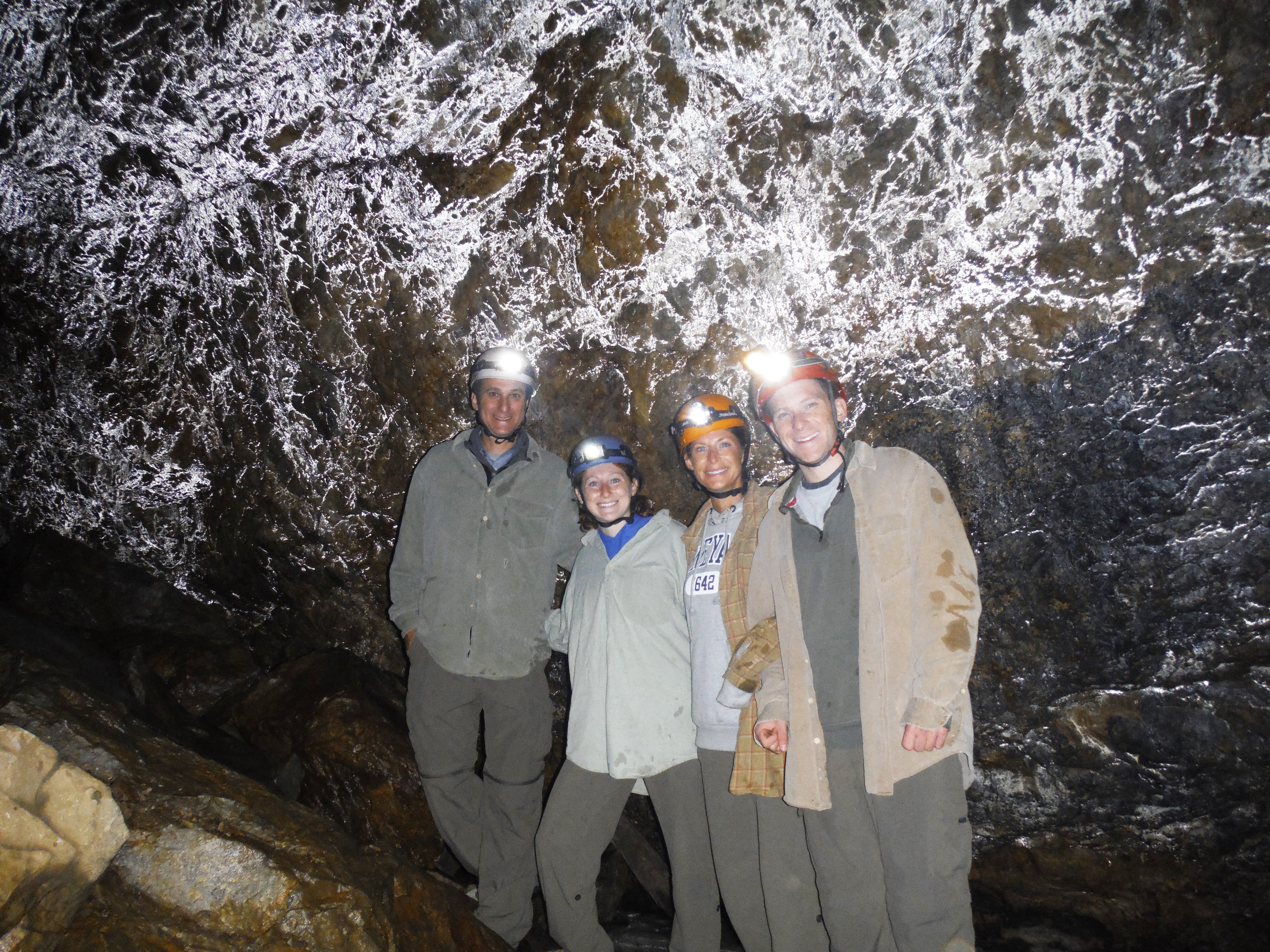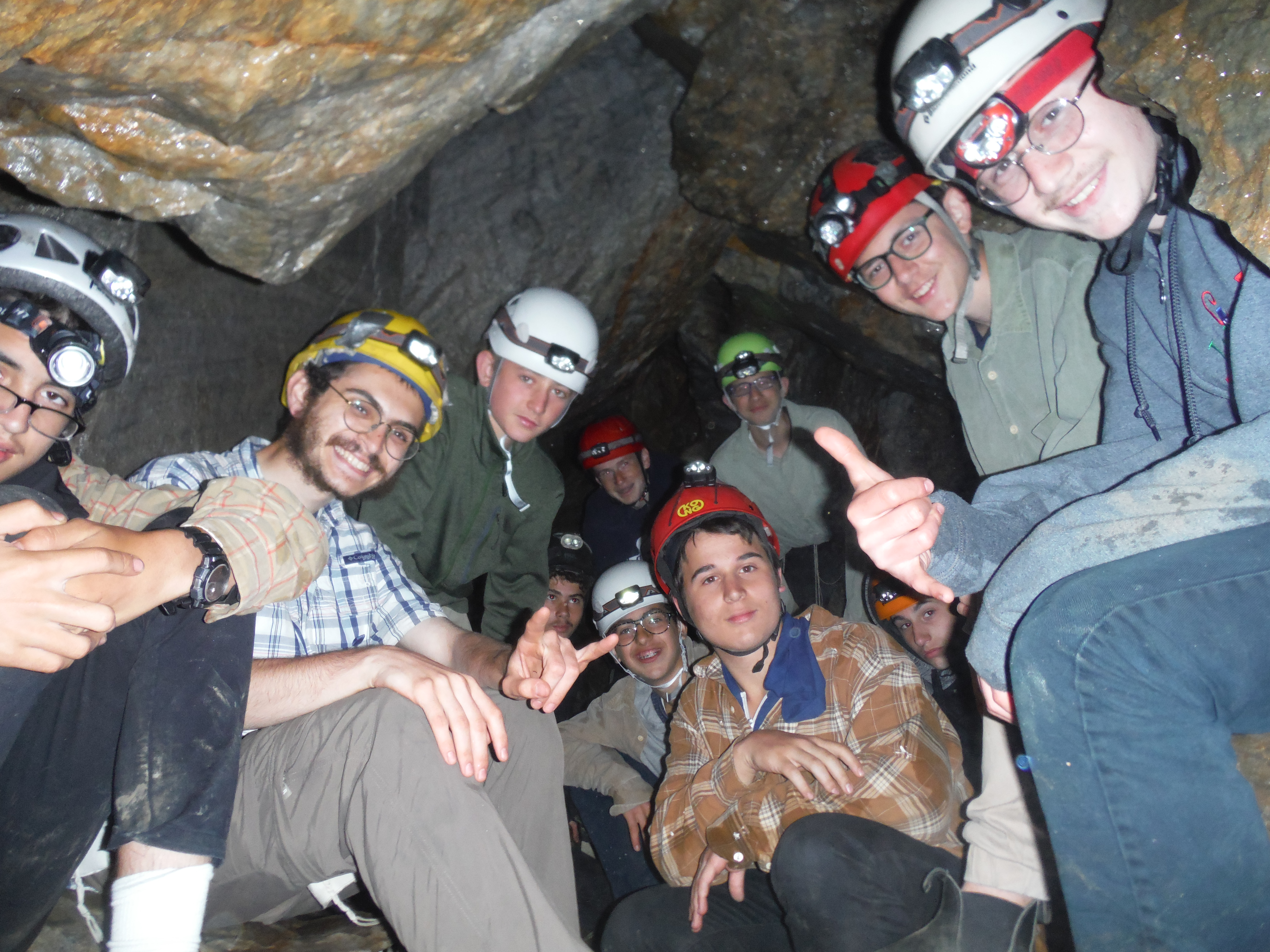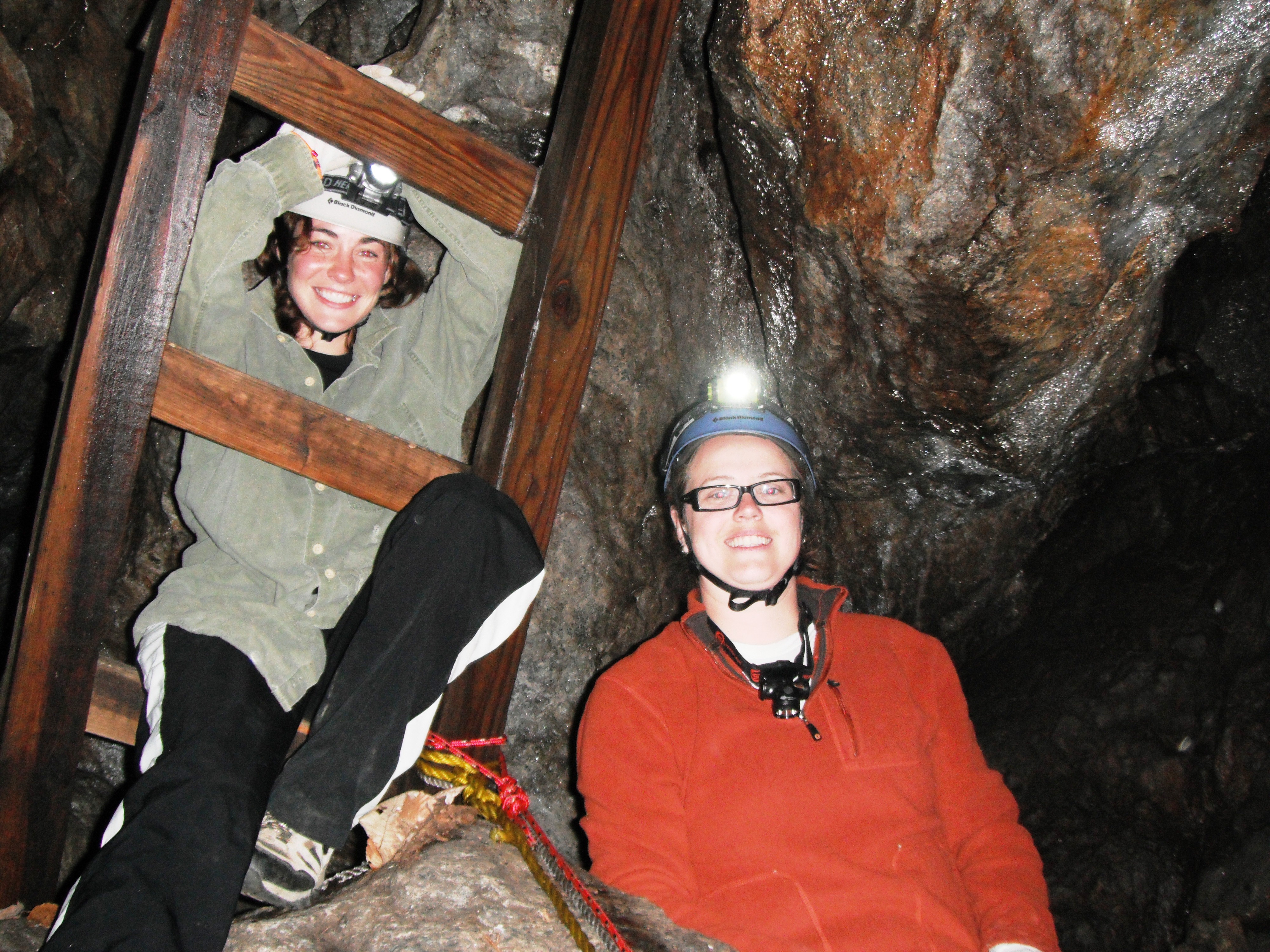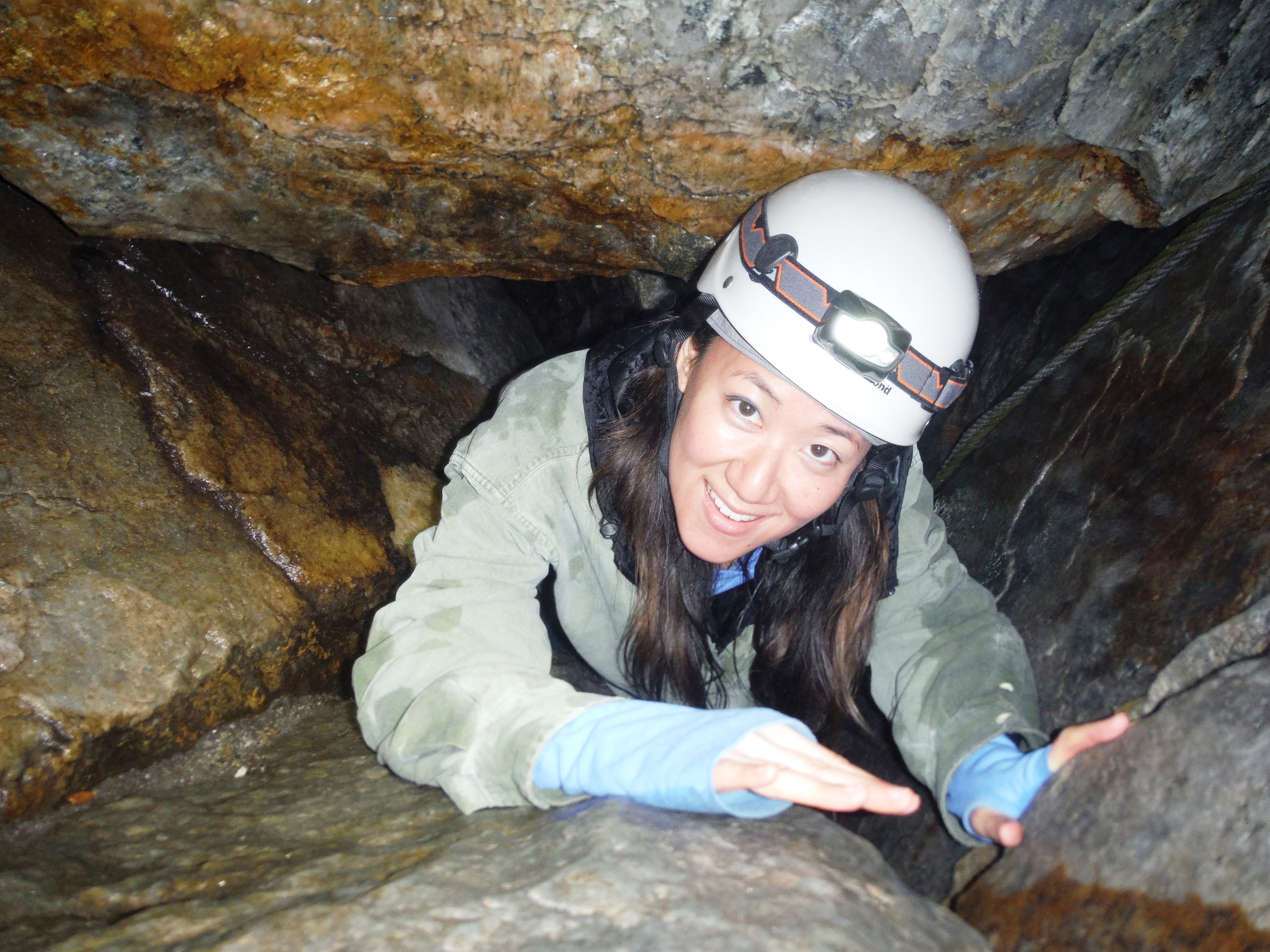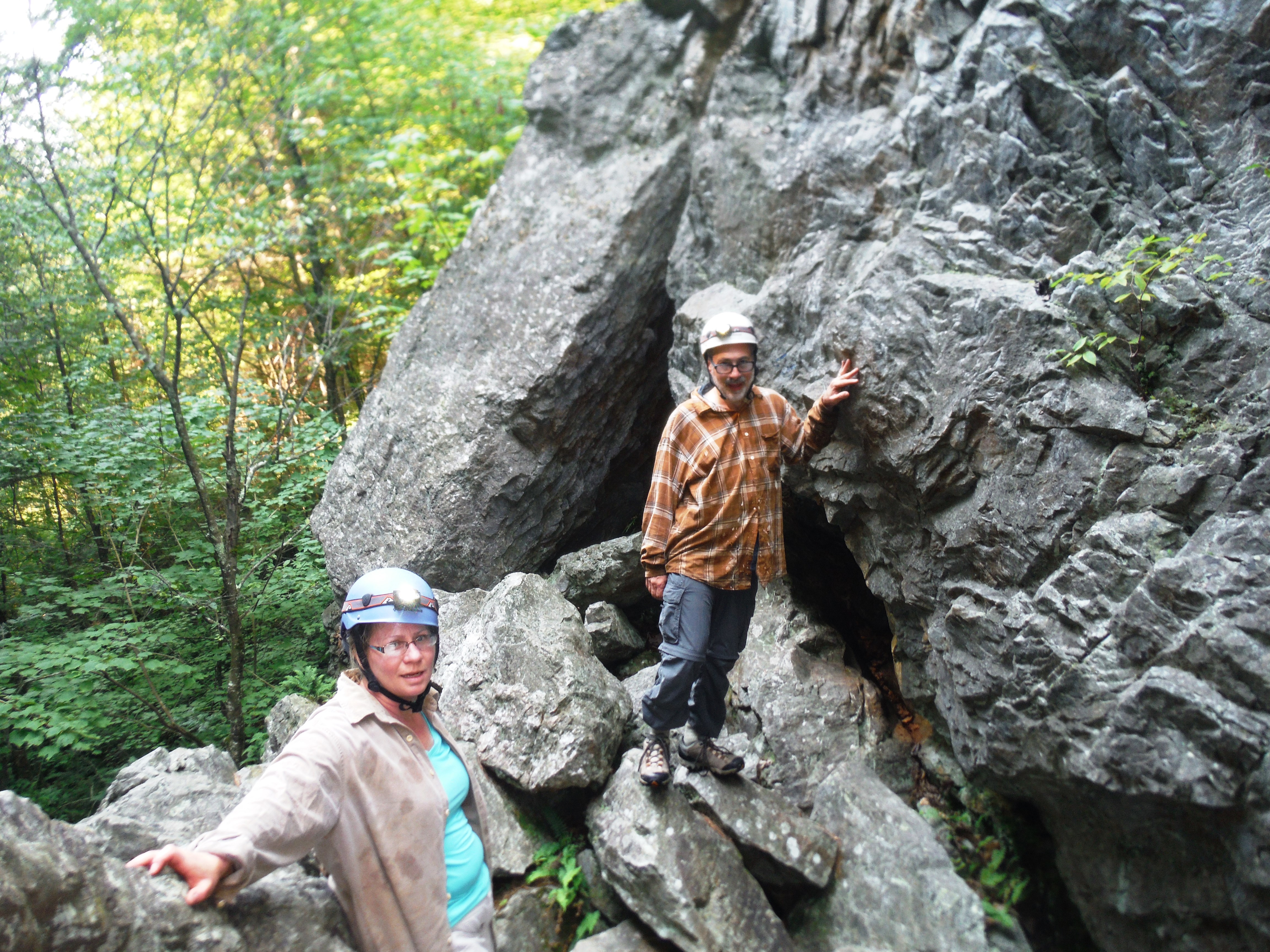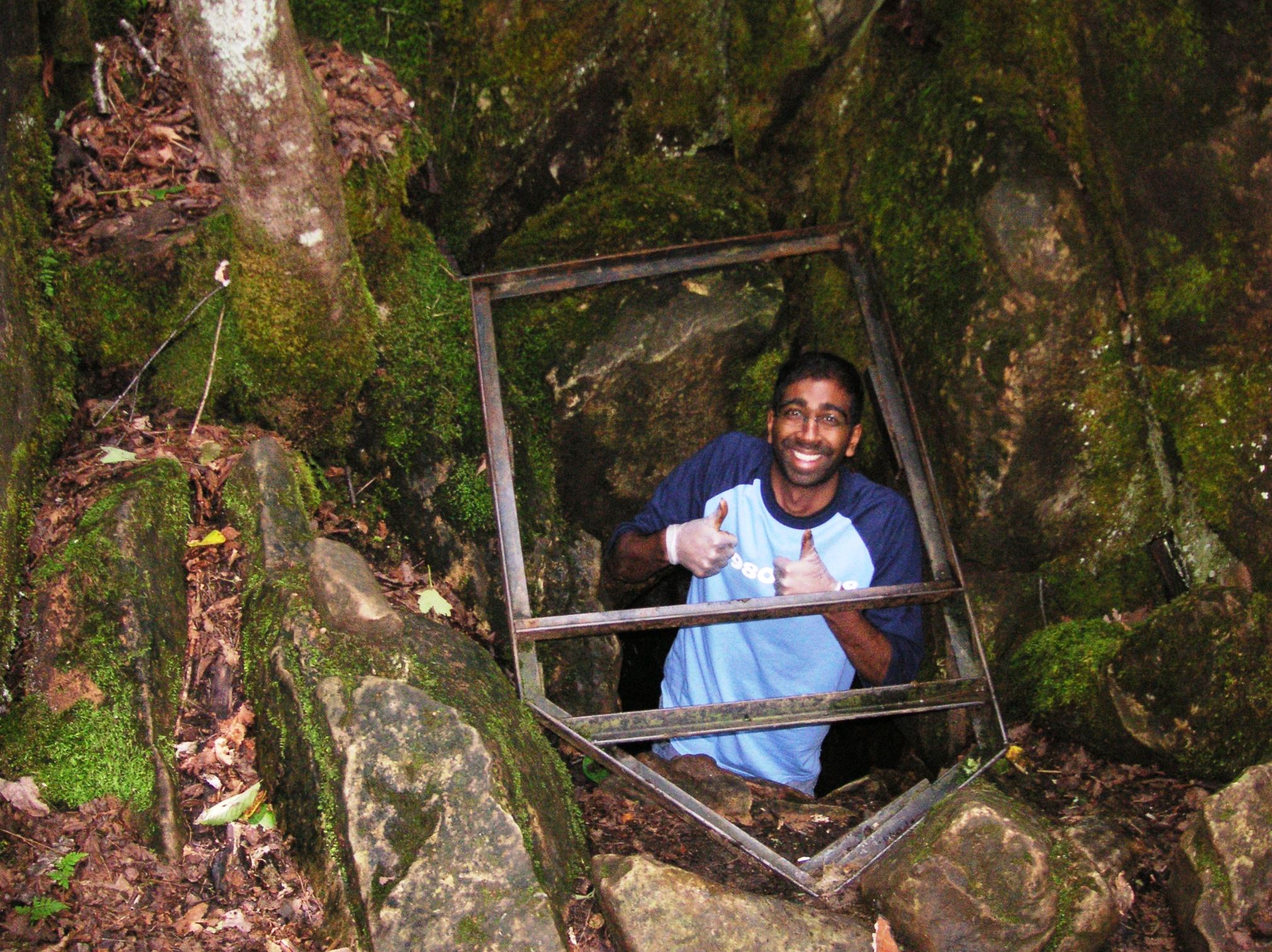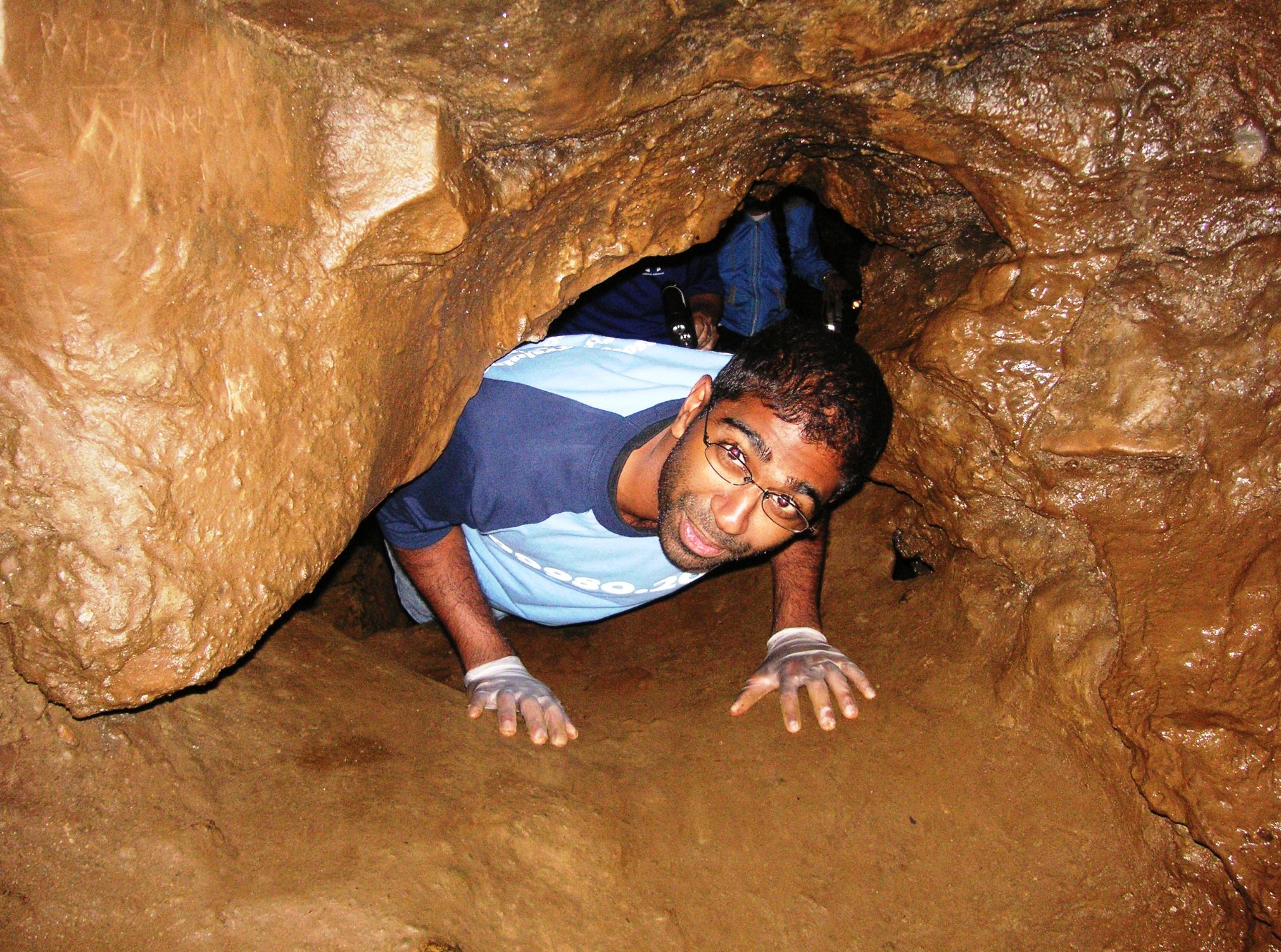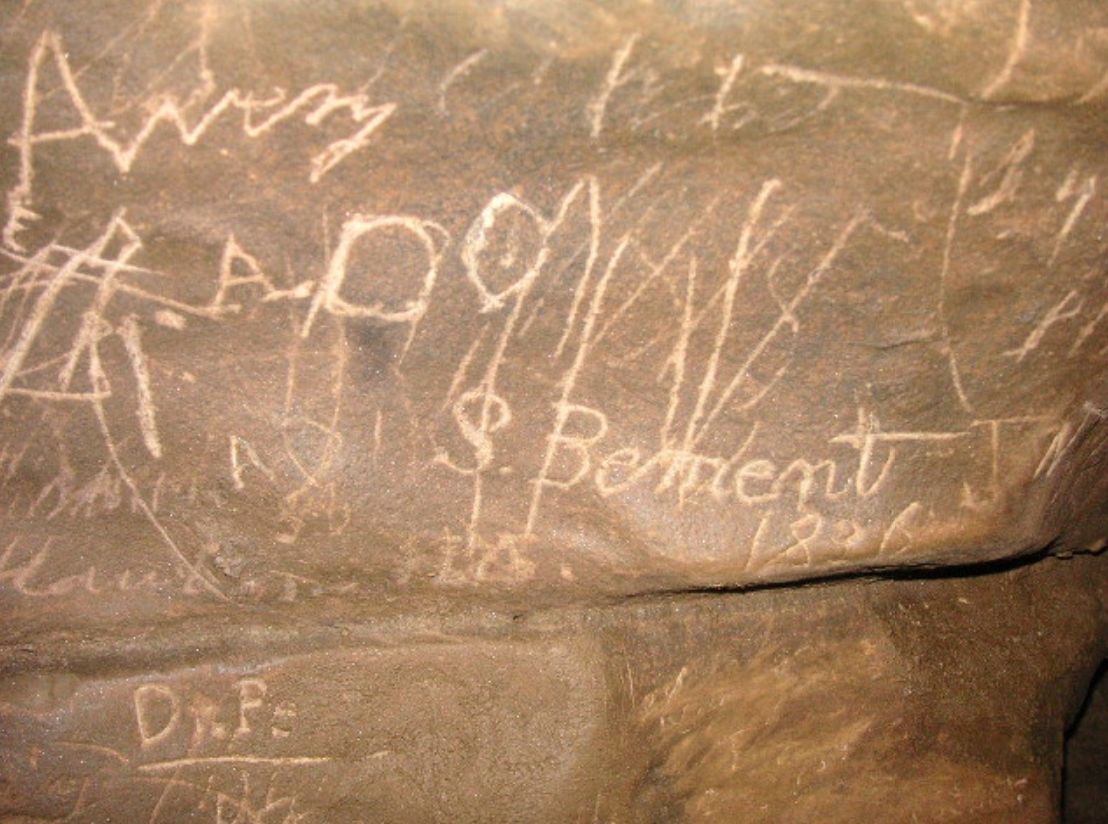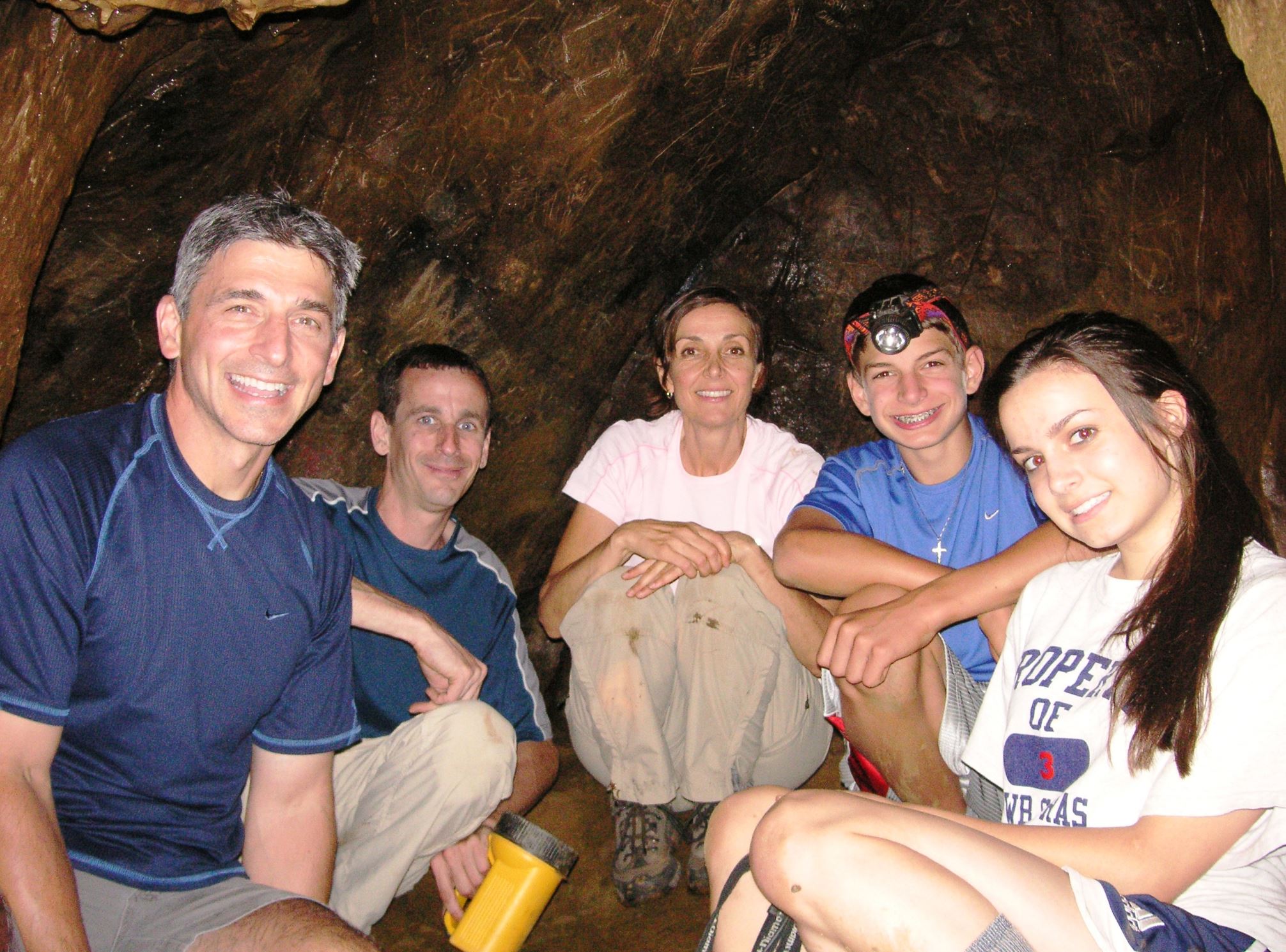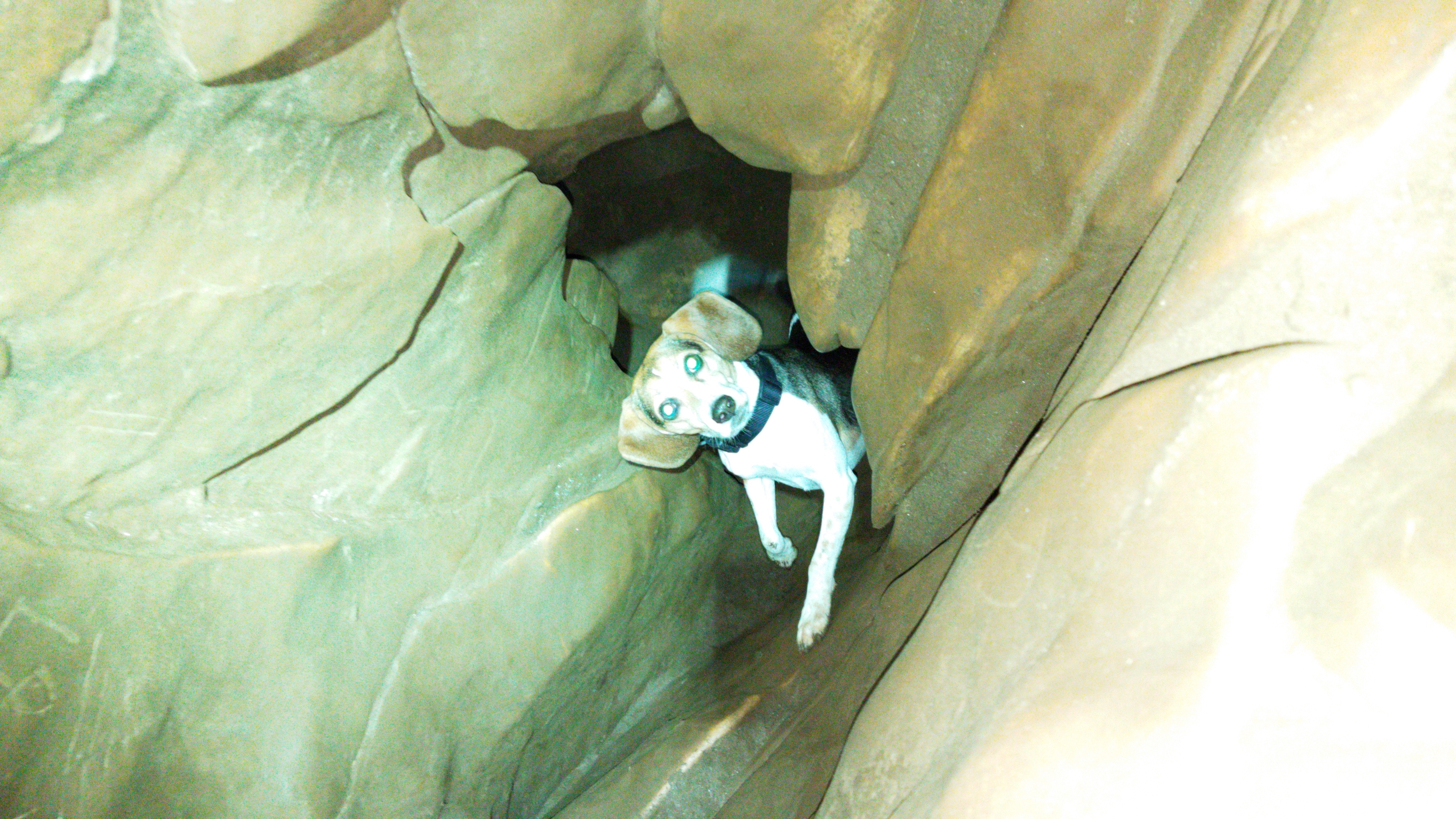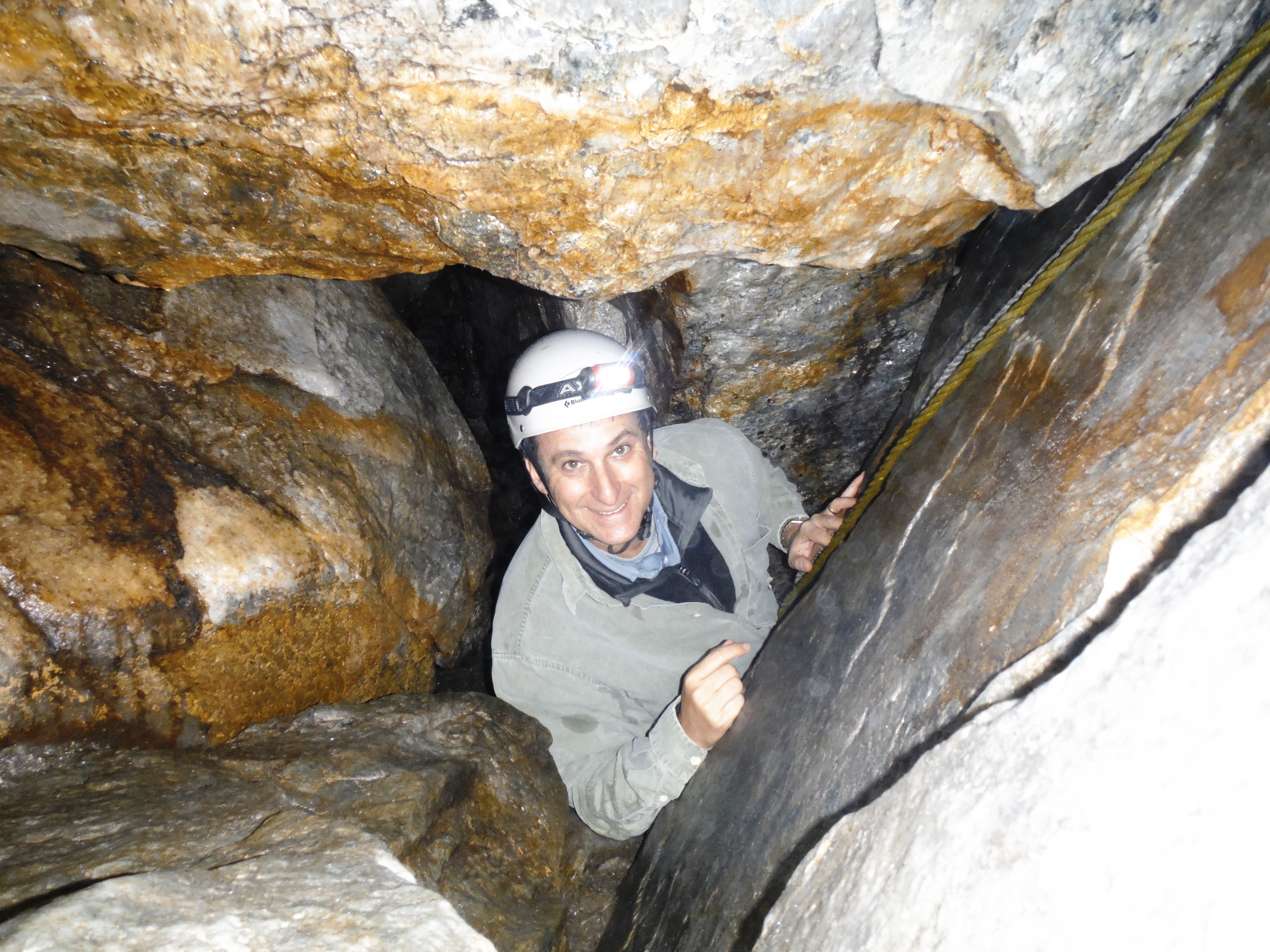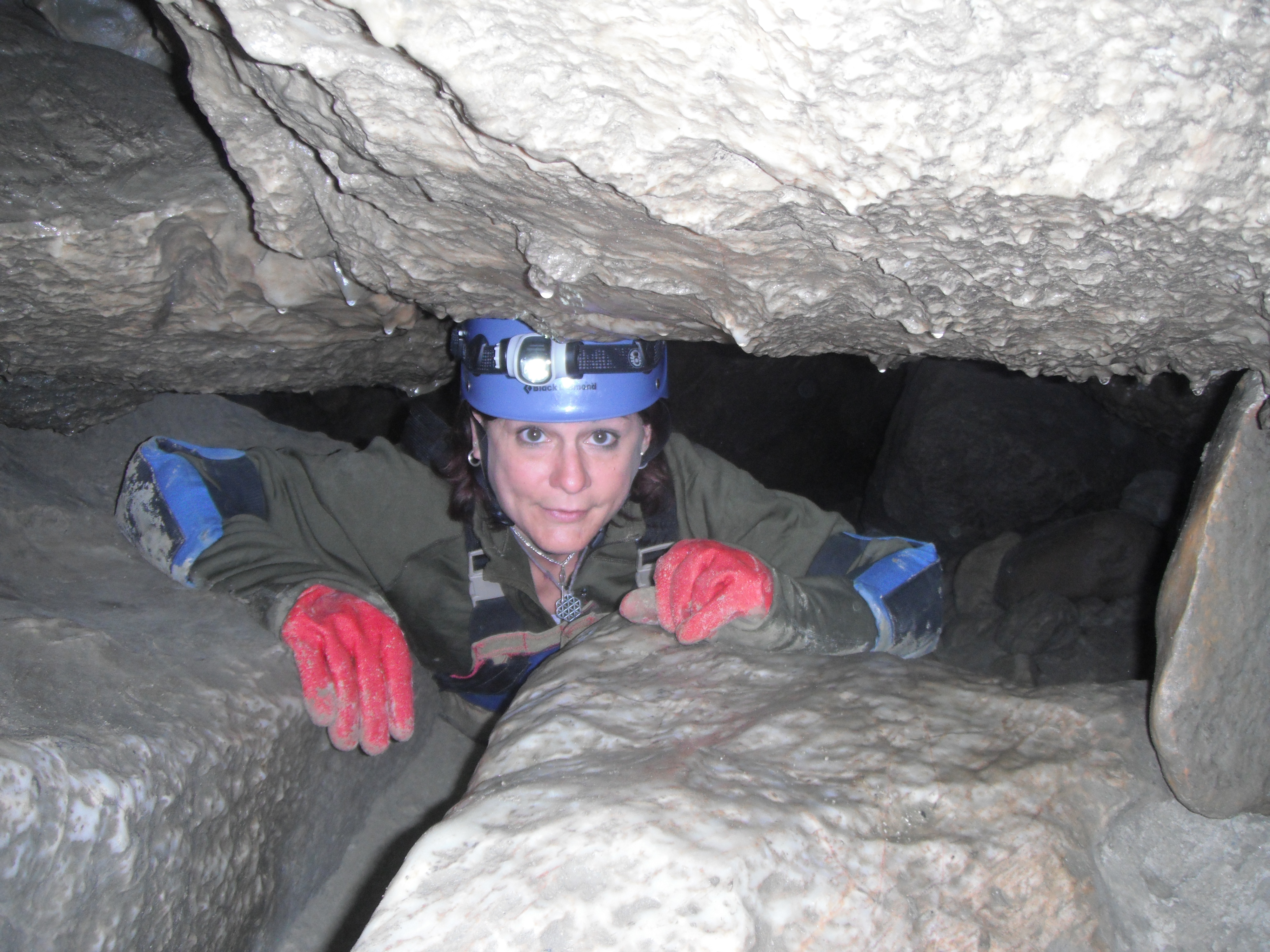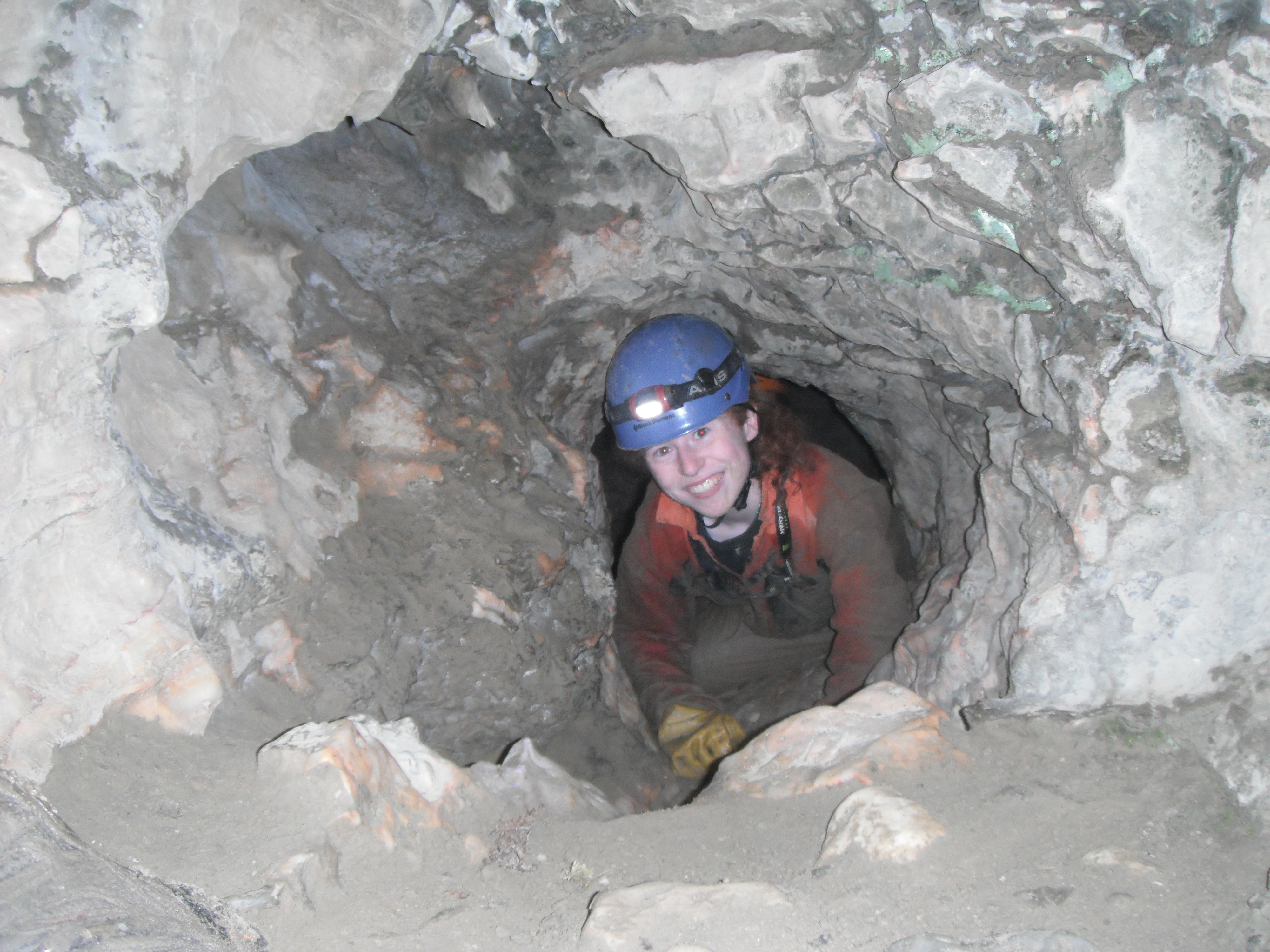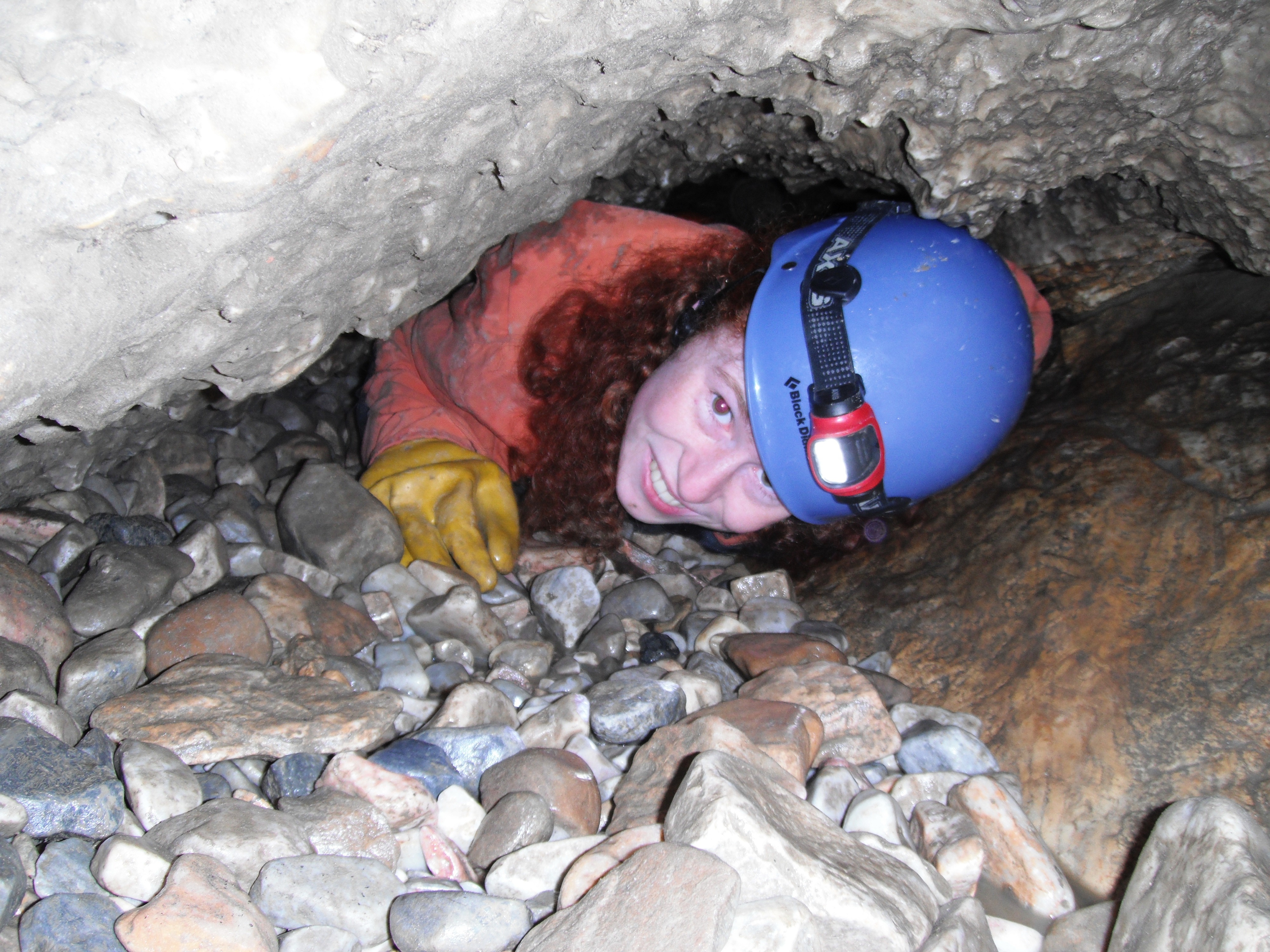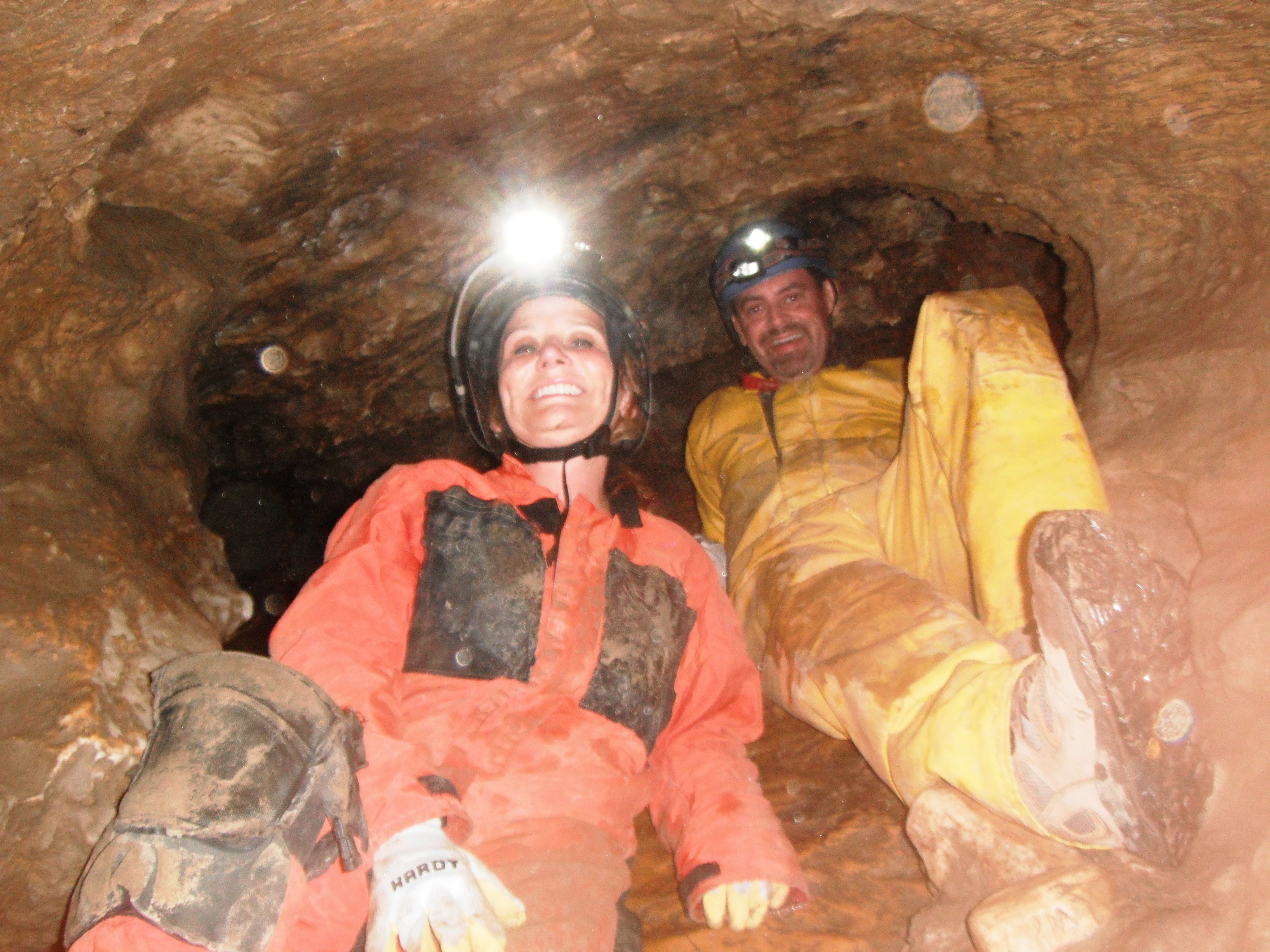CAVING
Home / CAVING
GUIDED CAVING ADVENTURES INFORMATION
What is caving? Traditionally known as spelunking in the United States and Canada and potholing in the United Kingdom and Ireland – is the recreational pastime of exploring wild cave systems. The challenges involved in caving vary according to the cave being visited, but – in addition to the total absence of light beyond the entrance – often include the negotiation of pitches, squeezes, and water hazards. Sometimes categorized as an “extreme sport”, it is not commonly considered as such by long-time enthusiasts. Many caving skills overlap with those involved in hiking, canyoneering, rock climbing and scrambling. Caving is often undertaken for the enjoyment of the outdoor activity or for physical exercise, as well as original exploration, similar to mountaineering or diving.
ATA offers beginner-friendly to advanced guided caving trips. Over the years guests have commented how caving was their most memorable adventures beside kayaking the river over the beaver dams. On our trips you will get to experience a true caving adventure, not your typical tourist walking cave tour. Exploration of caves takes us into a world much different from that above ground, a world of darkness surrounded by rock and mud.
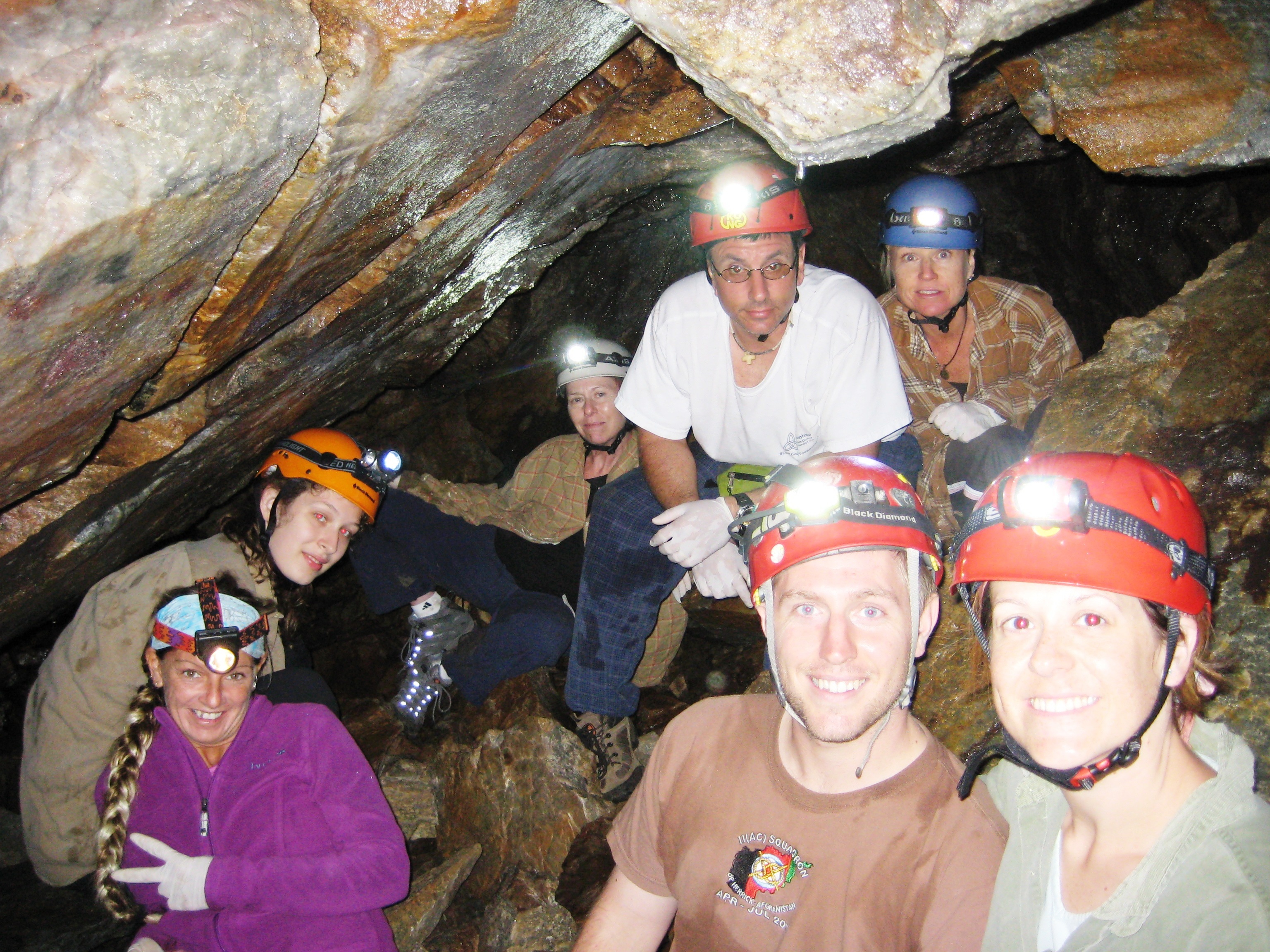
Exotic formations, ice rooms, streams, waterfalls, tight crawlways, deep canyons and the unknown await the cave explorer. Our personalized guided caving adventure rates vary; we have many cave options including locations, group size, cave duration and adventure(s) requested. Caving can last any length of time desired, from one-hour, multiple-hours, to a half-day or full-day. For current prices, see ATA’s Guided Day Adventure Rates webpage. Please call or contact John for group availability and for more information; though he might be out leading a tour, so please leave a message or use our reservation form to book your adventure. Caving can also be combined with a kayaking adventure, Hiking trip or sightseeing tour to make an adventure you will recall for years!
The owner of ATA, John Keough, discovered the largest cave in New England, so with his caving experience you will have an underground adventure to remember.
There are 4 local Killington caves we visit that require very short hikes. One pair of caves is solutional, meaning they were formed by water eroding limestone; the other pair of caves are talus, consisting of open spaces among large rocks and boulders in piles at the base of cliffs or steep slopes. It takes just about an hour to explorer the two talus caves, including the hike to the cave. The talus cave is ATA’s most popular adventure. The solutional caves take approximately 1.5-hours to drive to, hike and explore.
The half-day Ice Cave Adventure is one of more popular adventures, that will last 3 to 4 hours, including the 25-minute drive to the trailhead. The 45-minute hike is approximately a half-mile in length with 500 vertical feet of climbing, with some slight rock scrambling. Depending on the size of the group, you can expect a solid hour underground in the cave, which opens mid-June with ice lasting to late July and, some years, to August.
For the more adventurous, ATA offers a full-day cave trip to New England’s fourth largest cave. Having some 1,800 feet of horizontal passage, the first 100 yards containing three “pinches”; the Cobble Crawl, the Wet Pinch, and the U-Pinch. The last of these, some 500 feet into the cave, is a 9.5 x 15 x 24-inch-long squeeze at the bottom of a U-shaped passage; some folks have to take off their helmets, entering the pinch upside down, on their back. After the last pinch, the cave opens into some large rooms with multiple passages heading out to the famous and beautiful Lake Room, Waterfalls Passage, and Corkscrew Chimney. The cave is a solutional, formed in both Colombian marble and Shelburne formation marble. The guided cave adventure takes approximately 6-8 hours depending on group size. The day’s adventure includes a 45-minute drive, a 15-minute uphill hike to the cave entrance, and 3-4 hours underground exploring the cave.
TALUS CAVES
SOLUTIONAL CAVES
ICE CAVES
FULL DAY CAVES
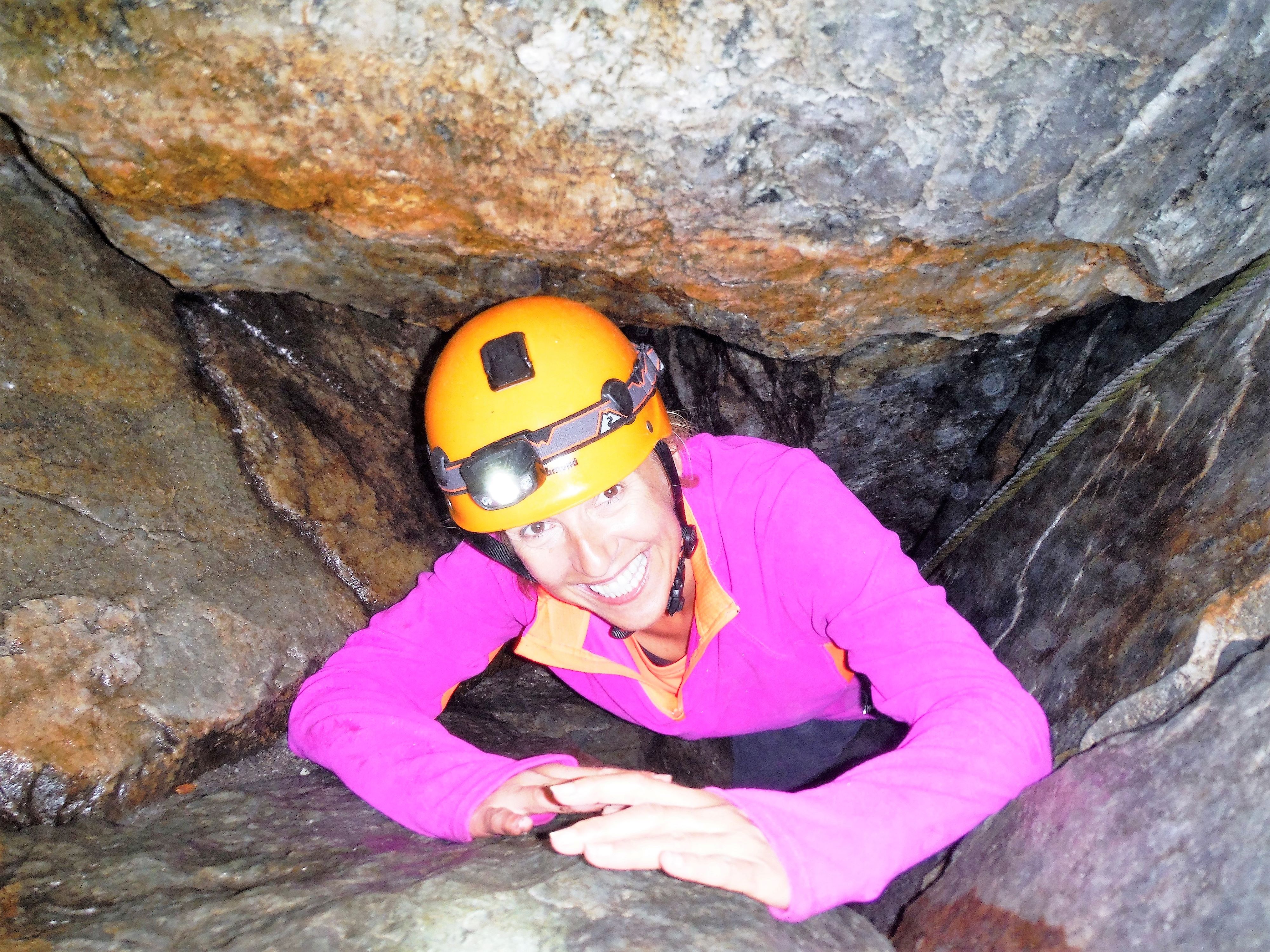
TALUS CAVES
A great introduction cave for beginners and is our guest’s favorite. It is a 5 to 10-minute hike to the cave location. The guided trip includes approximately an hour-long cave adventure, making it just perfect for first timers. You are never too far away from an entrance; the cave passage presents no serious danger or exposer. Following this talus cave, a popular combination is kayaking on the upper winding river or a relaxing lake paddle with a swim. For current prices, see ATA’s Guided Day Adventure Rates webpage.
Talus caves are openings formed between boulders piled up on mountain slopes. Most of them are very small both in length and in cross section. Some boulder piles, however, do have explorable interconnected “passages” of considerable length. Some of the largest talus caves occur among granite blocks in New York and New England, where integrated systems of passages between boulders have been mapped to lengths of several kilometers.These talus caves were formed by Glacial Plucking.
Plucking, is a glacial phenomenon that is responsible for the erosion and transportation of individual pieces of bedrock, especially large “joint blocks”. This occurs in a type of glacier called a “valley glacier”. As a glacier moves down a valley, friction causes the basal ice of the glacier to melt and infiltrate joints (cracks) in the bedrock. The freezing and thawing action of the ice enlarges, widens, or causes further cracks in the bedrock as it changes volume across the ice/water phase transition (a form of hydraulic wedging), gradually loosening the rock between the joints. This produces large pieces of rock called joint blocks. Eventually these joint blocks come loose and become trapped in the glacier. This is why most vistas and rock faces in New England face Southwest showing the direction of retreating glacial north to Canada.
SOLUTIONAL CAVES
Another great cave for beginners and children of all ages. It is a 10-minute hike to the cave location, with the total adventure lasting approimatly1.5 hours. The guided trip includes approximately an hour-long cave adventure. Following caving, a popular combination is kayaking on the upper winding river. While first discovered in 1818, this pair of caves consists of several chambers worn through the ages by the passage of water through the soft limestone. The cave walls contained many historical signatures even from President Coolidge family. However, careless visitors have destroyed them by carving their name over them. For current prices, see ATA’s Guided Day Adventure Rates webpage.
The largest and most common caves are those formed by dissolution of limestone or dolomite. Limestone is composed mostly of calcium carbonate in the form of the mineral calcite.
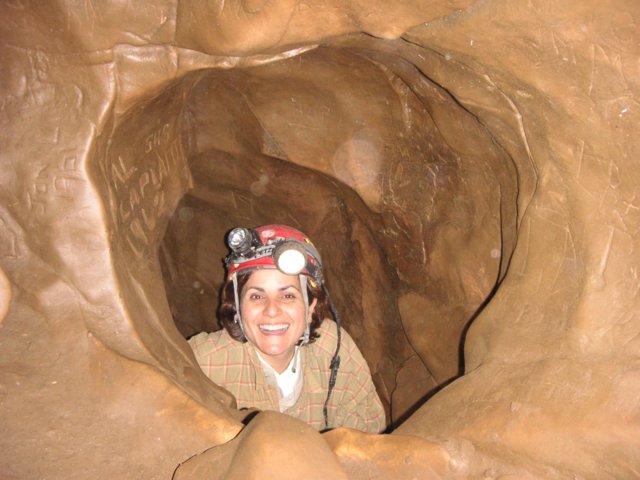
Dolomite rock consists of calcium magnesium carbonate, the mineral dolomite. Both these carbonate minerals are somewhat soluble in the weak acids formed by carbon dioxide dissolving in groundwater. Water seeping through soils into the bedrock, water collected by sinkholes, and surface streams sinking underground at the margins of karst areas all percolate along fractures in the bedrock and gradually create sizable passages by chemical action. Because the dissolution process takes place deep in the bedrock, it is not necessary that solution caves have entrances. Most entrances are formed by accidental processes such as the downcutting of surface valleys, the collapse of sinkholes, or the emplacement of quarries or road cuts. Accidental processes of passage collapse and passage plugging divide caves into smaller fragments. Because of this, there are many more small caves than large ones. The longest known cave is the Mammoth Cave–Flint Ridge system in south central Kentucky, which has a surveyed length of more than 345 miles (555 km).

HALF-DAY ICE CAVE
The half-day Ice Cave adventure takes approximately 3 to 4 hours depending on group size. The guided day’s adventure includes a 20-minute drive, a half-mile uphill hike and rock scramble to the cave entrance, and approximately an hour-plus underground exploring deep underground. Following caving, a popular combination is a river kayaking trip or a relaxing lake paddle with a swim. For current prices, see ATA’s Guided Day Adventure Rates webpage.
The Ice Cave is one of the Vermont’s best-known talus caves, formed by house-sized boulders pulling away from a cliff face inside a large ravine. It forms very pretty ice formations in the winter and holds ice well into the summer. The cave “ice-outs” approximately mid-June with ice lasting to late July and, some years, to August. It also has a very large room, and a ladder installed near the entrance to make one of the climbs easier.After the entrance climb you fade into pitch black and feel temperature drop. Sliding down damp rocks into the caves seems easy enough at first; but its naturally to wonder how you are going to get back out into sunshine and warmth.
At the lowest level of the Ice Caves, you really feel the temperature drop and discover a large chamber fades into pitch with towering rock walls on either side. A small pool of clear, cold water — fed by melting ice and ground water — rests at cave bottom with two passages to explore. On one rock walls is a fantastic example of what cave scientists call cryptobiotic crust, a thriving community of lichens and mold. Shining a flashlight beam on the crust produces a dazzling, silver fluorescent-like effect; light rays are reflected off the biota in a fashion similar to reflective paint used on highway signs.
FULL DAY CAVE
The guided full-day cave adventure takes approximately 6-8 hours depending on group size. The day’s adventure includes a 45-minute drive, a 15-minute uphill hike to the cave entrance, and 3-4 hours underground exploring the cave. For the more adventurous, ATA’s full-day cave trip to New England’s fourth largest cave. Having some 1,800 feet of horizontal passage, the first 100 yards containing three “pinches”; the Cobble Crawl (featured to the right), the Wet Pinch, and the U-Pinch. The last of these, some 500 feet into the cave, is a 9.5 x 15 x 24-inch-long squeeze at the bottom of a U-shaped passage. Some folks have to take off their helmets, entering the pinch upside down, on their back. After the last pinch, the cave opens into some large rooms with multiple passages heading out to the famous and beautiful Lake Room, Waterfalls Passage, Sand Crawl and Corkscrew Chimney. For current prices, see ATA’s Guided Day Adventure Rates webpage.
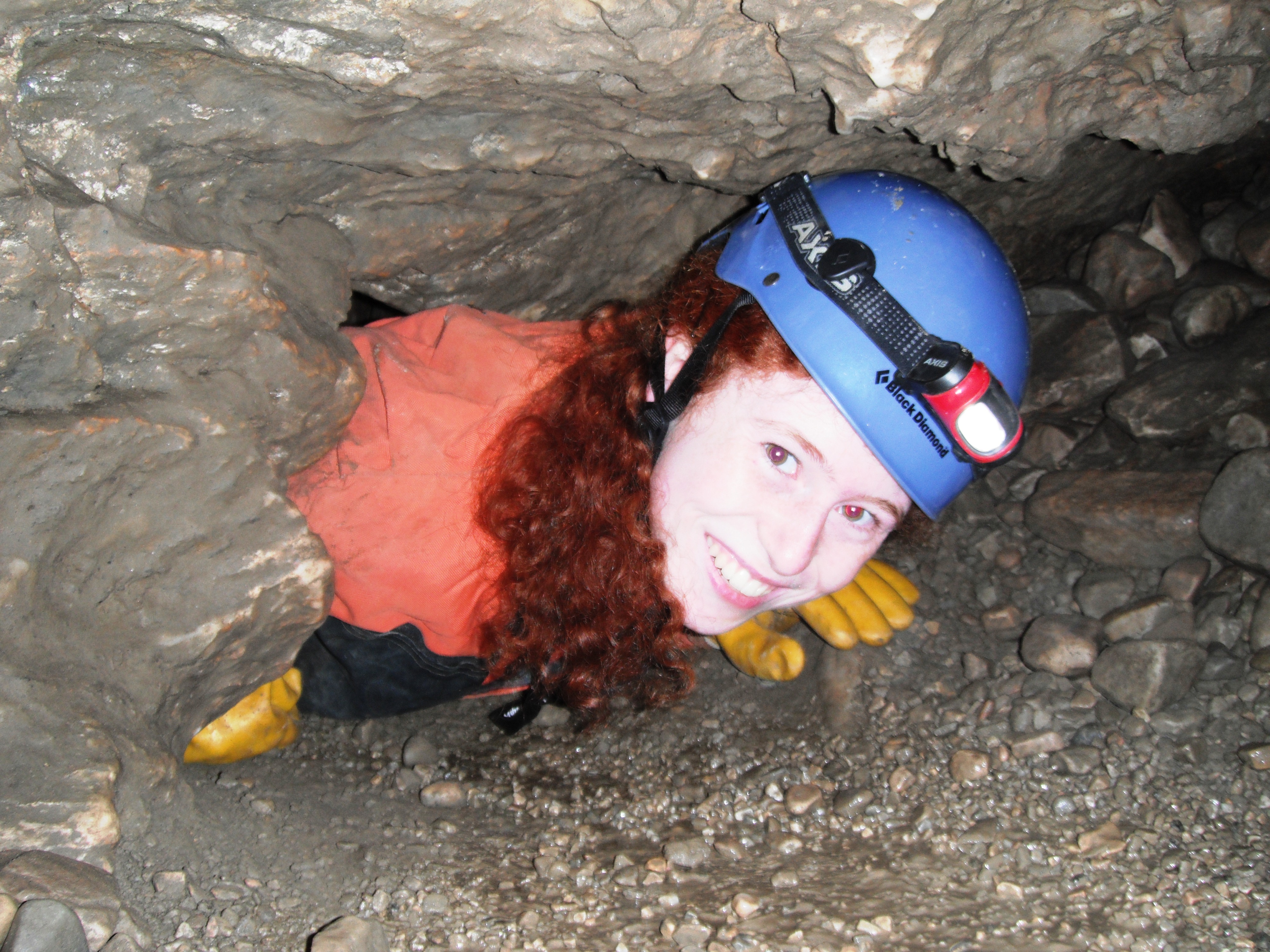
SIGN UP FOR OUR NEWSLETTER
and never miss any special offers or news!
Contact Us
Call or Text: 1-802-347-4343
Physical Address: 78 Weathervane Drive, Killington, VT 05751
Mailing Address: PO Box 394, Killington, VT 05751
Hours: Open seven days a week from 7:00am-8:45pm

